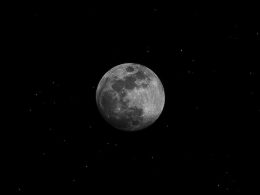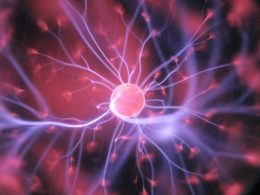The moon’s influence on Earth’s crust can have subtle effects that may contribute to seismic events. While the direct triggering of earthquakes by the moon is still a topic of debate, scientists have explored potential mechanisms through which the moon’s influence can affect the occurrence of seismic events. Here’s an overview of these concepts:
1. Tidal Stress: The moon’s gravitational pull creates tidal forces on Earth, primarily affecting ocean tides but also exerting a lesser force on the solid Earth. These tidal forces can induce stress on the Earth’s crust, potentially affecting fault lines. However, the stress caused by tidal forces alone is generally considered too small to directly trigger significant earthquakes.
2. Earth Tides: The tidal forces from the moon generate “earth tides,” causing small deformations in the solid Earth. Earth tides can produce strains on faults, altering the stress conditions and potentially influencing seismic activity. However, the magnitude of these deformations and their direct link to earthquake occurrence remain subjects of ongoing research.
3. Resonance and Amplification: Some studies suggest that the moon’s gravitational forces can lead to the resonance and amplification of seismic waves. This resonance may increase the intensity of seismic waves generated by other factors, such as tectonic activity or volcanic processes, potentially affecting the severity of earthquakes in specific circumstances.
4. Stress Transfer: The moon’s gravity can induce stress transfer within the Earth’s crust. Tidal forces can redistribute stress from one fault to adjacent faults, potentially influencing the timing and occurrence of seismic events. However, the magnitude and extent of this stress transfer are still being investigated.
5. Lunar Phases: While the notion of a direct connection between lunar phases and earthquakes lacks consistent scientific evidence, some studies have explored potential correlations. These investigations have generally focused on statistical analyses, examining if there are any patterns or trends between lunar phases and earthquake occurrence. However, no conclusive and widely accepted correlations have been established.
6. Moonquakes: The moon itself experiences seismic activity known as moonquakes. These moonquakes are believed to be caused by tidal forces exerted by the Earth and gravitational interactions with other celestial bodies. Studying moonquakes can provide insights into the behavior of seismic events in a different planetary context.
It’s important to note that the moon’s influence on seismic events is considered secondary compared to other geological factors. Tectonic plate movements, fault interactions, and accumulated stress play more significant roles in triggering earthquakes. The moon’s influence, if any, is likely to be subtle and dependent on specific conditions.
Further research, including the analysis of seismic data, numerical modeling, and laboratory experiments, continues to advance our understanding of the complex relationship between the moon’s influence and seismic events on Earth.












